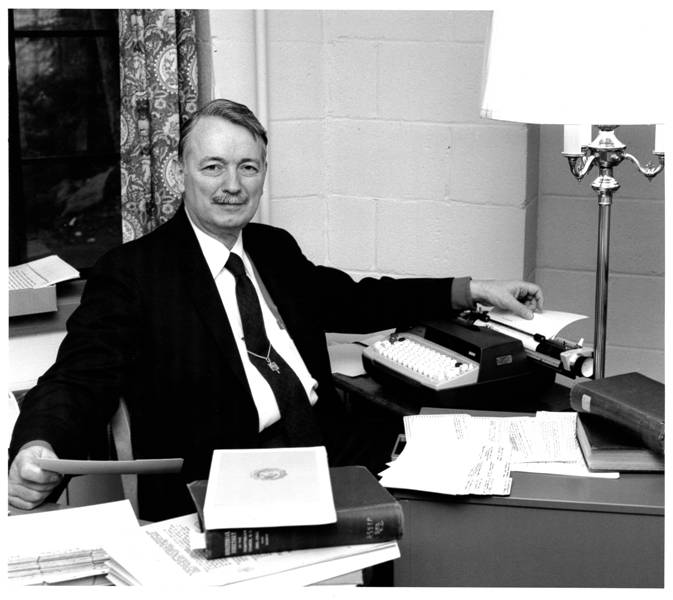Remembering Kenneth Foreman

On April 15, 2015, the Rev. Dr. Kenneth J. Foreman died peacefully at his son's home in Black Mountain, NC. Below, Virginia F. Rainey, author of Stewards of Our Heritage: A History of the Presbyterian Historical Society, remembers Dr. Foreman's service to the Historical Foundation in Montreat, N.C., where he was director for ten years. You can read Reverend Foreman's complete obituary here.
--
As Executive Director of the Historical Foundation of the Presbyterian and Reformed Churches, July 1969 to August 1979, the Rev. Dr. Kenneth Foreman was an energetic fireball who knew only one way to operate—full speed ahead, showering his endeavors with creativity and by the force of his personality, dragging the institution out of the province of antiquarian bibliophiles and into the world of archives and denominational service, from the caring hands of history-lovers into the realm of professional librarians and archivists. Foreman recruited specialized staff and challenged the denomination to pay them fairly, doubling the personnel budget in four years. He added new programs such as the Living History oral history program, encouraging participants to “tell it the way you saw it,” while pointing out that when they did, “History gains. And where History is ahead, men have a better chance to understand where they are—and where their next choices may take them.” He believed that “a warm, live historical interest cultivated in pastors, elders and people undergirds and sharpens their interest and effectiveness in every program and effort the church undertakes.”

He seized the opportunity offered by the Presbyterian Church in the United States General Assembly’s restructure to write into the restructure mandate a requirement to deposit records of denominational agencies, who had previously only made optional, voluntary contributions. He coaxed documents out of reluctant agencies, or in his own words, “lassoed the biggest haul of source material in Southern Presbyterian history.” He had a passion for the complete record and mistrust of records management. “If you are an executor or heir, you should never try to ‘weed out’ materials of little or no historic interest….What the historian prays for is the entire body of a man’s records, files, papers…however humble. Two hundred years later, they are the clearest window into the everyday Christian life of a past age.” Although his persuasive efforts literally filled the building to overflowing (he compared the working conditions to a submarine, for archivists were walking through 10-foot-high stacks of boxes), Foreman is remembered for “his building of an effective staff, his maintenance of high morale and harmonious working relations among staff members, his careful and constant protection of the property of the Foundation, and his extraordinary courtesies accorded to visiting scholars.
That the record of the national Presbyterian Church in the South survives and is accessible today is the work of his hands.
--
Sources:
“Living History: Historical Foundation News,” October 1972, p. 2.
Kenneth Foreman to T. L. S. Katzenmier letter, January 26, 1972.
Foreman, “Historical Foundation News,” August 1978, p. 3.
“Records management,” Foreman, Historical Foundation News, May 1977, p. 1.
Submarine reference, Foreman, Board of Directors Minutes, August 12, 1975, p. 37.
Evaluation, Foreman, Board of Directors Minutes, August 18, 1976, pp. 29-30.




















